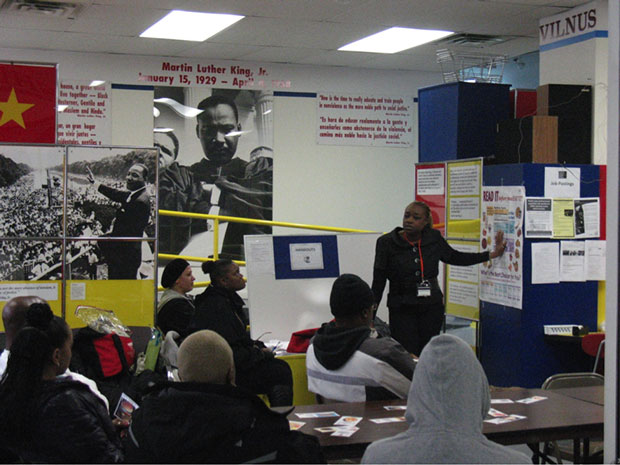The Prohibition era in the United States, spanning from 1920 to 1933, marked a fascinating chapter in social history. Amidst the restrictions on alcohol, clandestine venues known as speakeasies emerged, transforming nightlife and fashion in ways that continue to influence modern culture. This article explores how speakeasies shaped trends in drinks, fashion, and societal norms, leaving a legacy that still resonates today.
- Introduction: The Allure and Evolution of Speakeasy Culture
- Historical Context: How Speakeasies Shaped Modern Trends
- The Educational Perspective: Understanding the Cultural Impact of Speakeasies
- Speakeasies and the Birth of Modern Cocktail Culture
- Fashion and Identity in the Speakeasy Era
- The Intersection of Technology and Style: Enhancing the Experience
- Modern Reflections: The Legacy of Speakeasy Drinks and Fashion Today
- Deep Dive: The Cultural Significance of Secret Societies and Fashion Symbols
- Conclusion: The Bright Legacy of Speakeasy Drinks and Fashion
1. Introduction: The Allure and Evolution of Speakeasy Culture
The clandestine atmosphere of speakeasies captured the imagination of a generation seeking excitement and rebellion. Originating during the Prohibition era, these secret social spaces offered an escape from strict alcohol bans, fostering a unique culture intertwined with fashion, music, and social norms. Their mystique and glamour continue to symbolize a blend of defiance and sophistication.
a. Origins of the Prohibition Era and Secret Social Spaces
The introduction of Prohibition led to the closure of legal alcohol establishments, prompting entrepreneurs and risk-takers to establish hidden venues. These secret bars—often concealed behind unassuming storefronts—became hubs of illicit activity, where patrons could indulge in spirits, jazz, and lively conversations without fear of legal repercussions.
b. The Cultural Significance of Clandestine Drinking and Fashion
Beyond their functional purpose, speakeasies became cultural icons, representing resistance to authority and a celebration of freedom. Fashion played a crucial role, with patrons adopting daring styles—flapper dresses, feathered headbands, tuxedos—that expressed rebellion, elegance, and modernity. The secrecy added an allure that elevated nightlife into an art form.
2. Historical Context: How Speakeasies Shaped Modern Trends
a. The Rise of Jazz Music and Its Association with Speakeasies
Jazz music, with its improvisational style and energetic rhythms, became the soundtrack of the speakeasy scene. Artists like Louis Armstrong and Duke Ellington pioneered jazz, making these venues the birthplace of a cultural revolution. The association between jazz and clandestine nightlife created a symbiotic relationship that propelled both music and fashion forward.
b. Fashion Statements Born in Secret Bars—Flapper Dresses, Accessories
Fashion during this era reflected the spirit of liberation. Flapper dresses with fringe, sequins, and dropped waistlines allowed women to dance freely and express independence. Accessories such as long pearl necklaces, feathered headbands, and cigarette holders became symbols of modern femininity, often seen in photographs from the period.
c. Technological Innovations Influencing Nightlife and Fashion
Innovations like vintage cameras (e.g., Polaroids and early flash photography) and ambient lighting (such as magnesium flash powder) enhanced the visual spectacle of speakeasies. These technologies played a role in documenting the era’s style and mood, influencing future aesthetic trends in nightlife and fashion photography.
| Key Cultural Elements | Impact |
|---|---|
| Jazz Music | Defined the ambiance; promoted bold fashion statements |
| Flapper Fashion | Revolutionized women’s style; symbolized independence |
| Lighting & Photography | Enhanced visual culture; inspired modern aesthetics |
3. The Educational Perspective: Understanding the Cultural Impact of Speakeasies
a. How Speakeasy Culture Reflected Societal Shifts During Prohibition
The clandestine nature of speakeasies mirrored broader societal tensions—conflicting desires for personal freedom versus government control. The era’s secret venues became symbols of resistance, fostering a culture of rebellion that challenged traditional social hierarchies and norms.
b. The Role of Music, Fashion, and Social Norms in Defying Restrictions
Music and fashion served as acts of defiance. Jazz’s improvisation and women’s daring dress codes challenged conservative values, promoting a sense of liberation. These elements collectively contributed to a cultural shift beyond the immediate context of alcohol prohibition.
c. Examples of Iconic Figures and Their Influence
Louis Armstrong, with his pioneering jazz innovations, became a symbol of the era’s cultural rebellion. His music not only defined the sound of the Roaring Twenties but also embodied the spirit of freedom that speakeasies represented.
“Speakeasies were more than secret bars; they were the birthplace of a cultural revolution that challenged norms and inspired future generations in fashion, music, and social attitudes.”
4. Speakeasies and the Birth of Modern Cocktail Culture
a. Classic Drinks Originating from the Era—e.g., the “Lady In Red” as a Modern Tribute
Many cocktails from the Prohibition period have become staples of contemporary bartending. While some recipes were secret, others, like the “Lady In Red,” have been revived as tributes to the era’s elegance and creativity. This cocktail often features red-hued ingredients, echoing the symbolism of passion and rebellion associated with the period.
b. The Evolution of Drink Presentation and Accessories
Presentation was key—drinks were served in ornate glasses, often accompanied by accessories like gold-plated trumpet mouthpieces or vintage stirrers. These details enhanced the experience, making each drink a statement of style and sophistication. For enthusiasts interested in exploring vintage-inspired cocktails, modern bars often draw inspiration from these historical accessories.
c. Techniques and Ingredients That Define Vintage Versus Contemporary Mixology
Vintage cocktails relied on ingredients like homemade syrups, bitters, and spirits with higher proof, often prepared with techniques like muddling and shaking in antique shakers. Contemporary mixology combines these traditions with modern techniques such as molecular gastronomy and precision temperature control, blending the old and new seamlessly.
Sample Cocktail: The “Lady In Red”
This modern tribute features ingredients like cranberry juice, gin, and a splash of vermouth, garnished with a twist of citrus. Its vivid color and elegant presentation embody the rebellious yet classy spirit of the speakeasy era.
5. Fashion and Identity in the Speakeasy Era
a. The Significance of Dress Codes—Flapper Dresses, Tuxedos, Accessories
Dress codes were not merely about aesthetics but were expressions of social identity. Women adopted flapper dresses adorned with beads, sequins, and fringe to symbolize independence, while men often wore tuxedos or pinstripe suits, exuding sophistication and rebellion simultaneously. Accessories like long pearl necklaces, feathered headbands, and cigarette holders reinforced this image.
b. How Fashion Expressed Rebellion, Sophistication, and Social Status
Fashion became a language of defiance—shorter hemlines, bold makeup, and unconventional accessories challenged traditional Victorian standards. Simultaneously, high-quality fabrics and designer-inspired details conveyed social status, illustrating how style was intertwined with identity and societal positioning.
c. The Influence of Speakeasy Fashion on Modern Nightlife and Costume Design
Today’s vintage-inspired parties and costume designs draw heavily from Prohibition-era fashion. Films like “The Great Gatsby” and television series such as “Boardwalk Empire” have revived these styles, making them staples in modern nightlife for those seeking a touch of timeless elegance.
6. The Intersection of Technology and Style: Enhancing the Experience
a. Use of Lighting, Photography, and Sound to Create Immersive Atmospheres
Speakeasies employed innovative lighting—dim amber bulbs, flickering candles—and early sound systems to craft immersive environments that heightened the allure. Vintage cameras captured moments, influencing visual culture and inspiring modern recreations of the era’s aesthetic.
b. Non-obvious Technological Influences—Magnesium Flash Powder, Vintage Cameras—on Visual Culture
Magnesium flash powder revolutionized photography, allowing for dramatic lighting effects that emphasized glamour and facial expressions. These innovations contributed to the iconic imagery associated with the era, which continues to inspire contemporary fashion photography and entertainment.
c. Modern Reinterpretations: How Contemporary Fashion and Drinks Draw Inspiration from These Innovations
Today’s designers and mixologists incorporate vintage lighting effects, accessories like gold accents, and classic techniques to evoke the speakeasy atmosphere. For example, some bars use dim, warm lighting and antique glassware, aligning with the era’s aesthetics, while fashion brands revive flapper-inspired silhouettes for special events. For those interested in exploring this world, discovering vintage-inspired entertainment can be as simple as exploring themed online platforms—such as lady n red slot—which celebrate the timeless style and spirit of the period.
<h2 id=”modern-legacy” style=”font-family: Georgia, serif


